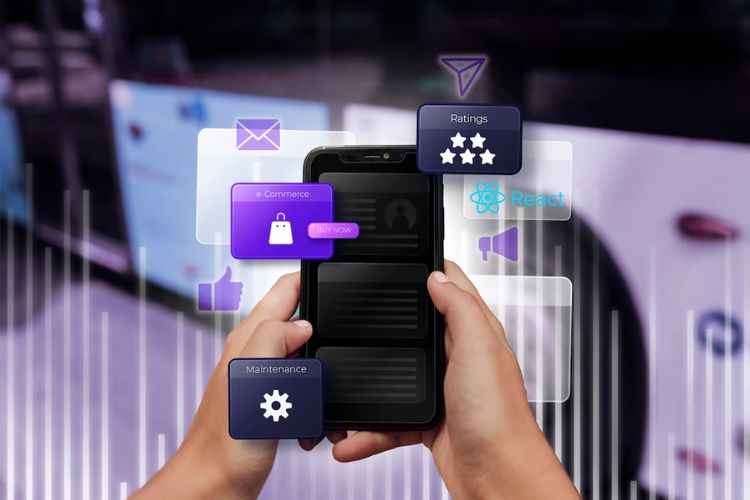
User engagement and satisfaction are critical in the digital realm for the success of websites. Web designers are turning to cutting-edge technology like ChatGPT to improve these elements. ChatGPT, which is powered by artificial intelligence, is revolutionising web design by creating interactive conversational experiences that increase user engagement and satisfaction. In this blog post, we will look at how ChatGPT can revolutionise websites and delight consumers with its extensive capabilities.
ChatGPT has outstanding characteristics that can considerably improve a variety of features:
- In terms of imagination, this powerful tool may effortlessly generate content ranging from poetry, novels, and scripts to code, music, and art.
- ChatGPT excels in accuracy, consistently offering proper replies and up-to-date information in response to user enquiries. Its high speed enables real-time text production and seamless language translation.
- ChatGPT’s engaging character shines through beyond its technological capabilities as it adeptly holds conversations with humans, captivating and entertaining them throughout exchanges.
- Its usability knows no limitations, as it may be used by people of various ages and capacities.
Understanding User Engagement & Satisfaction
The level of involvement, activity, and interest displayed by users on a website is referred to as user engagement. Users who are engaged are more likely to spend time exploring the website, interacting with its features, and doing desired actions such as making a purchase or filling out a form.
User satisfaction, on the other hand, refers to the total satisfaction and fulfilment felt by users when interacting with a website. Users who are satisfied have a positive opinion of the website, are more inclined to return, and may even become brand evangelists.
Role of ChatGPT
Through dynamic conversational experiences and personalised recommendations, ChatGPT increases user engagement and satisfaction. It involves consumers in engaging interactions that make them feel appreciated and heard. Users stay longer, explore more, and actively interact as a result, increasing engagement and satisfaction.
ChatGPT delivers personalised suggestions based on user preferences, boosting the relevance of website information. Prompt help and direct feedback boost satisfaction even further, encouraging long-term user commitment.
- Creating Interactive Conversational Experiences:
The integration of ChatGPT allows websites to provide interesting conversational interactions with users, simulating real-time conversations. Websites can utilise chatbots to deliver rapid responses, answer questions, and lead users through various processes.
For example, an e-commerce website can use ChatGPT to provide visitors with personalised product recommendations, answer their questions, and deliver frictionless shopping experiences.
- Personalized Recommendations and Customization
ChatGPT’s capacity to analyse user preferences and behaviours is one of its primary capabilities. Websites can now provide personalised recommendations and customization choices, improving the user experience.
Consider a news aggregator site that uses ChatGPT to curate content based on the interests and reading patterns of its members. Users are more likely to engage with the platform and find value in the information offered if content is tailored to their tastes.
- Real-Time Support and Assistance:
ChatGPT’s capacity to give real-time help and assistance, catering to users’ requirements around the clock, is one of its most notable characteristics. Websites with rapid responses can provide prompt customer assistance, address enquiries, and swiftly resolve difficulties.
A financial services website, for example, can use a ChatGPT-powered chatbot to assist consumers with account-related enquiries, transaction difficulties, and even personalised financial advice.
- Interactive Feedback and Surveys:
Websites can use ChatGPT to power interactive feedback forms and surveys to effectively collect user input and opinions. This method gives people an engaging way to submit feedback, comments, and discuss their experiences.
Consider a healthcare website with an interactive feedback form driven by ChatGPT. Patients can rate their experience, make ideas for improvement, and even request follow-up support, allowing the website and its users to communicate in both directions.
- Gamification and User Engagement:
Integrating gamification features into ChatGPT can significantly boost user engagement and create a satisfying experience. Websites can encourage visitors to communicate and participate actively by including a chatbot-based quiz, challenges, or incentives.
For example, an educational platform could use ChatGPT to create a quiz that awards users with badges or points upon completion. This not only promotes ongoing learning but also encourages users to advance and attain higher levels of engagement.
- Improved Accessibility:
Accessibility is an important part of user happiness that is frequently disregarded. ChatGPT can assist in making a website more accessible to disabled visitors.
It can, for example, be used to produce text explanations of photos for visually impaired users. It is possible to improve customer happiness for all users by making the website more inclusive. This can also help with SEO because search engines prefer websites that are accessible to all people.
- Analyzing User Data for Continuous Improvement:
One of ChatGPT’s key features is its analytical capabilities, which enable web designers to get insights from user interactions and feedback. Analysing user behaviour helps identify pain points and optimise the user journey to maximise conversions and satisfaction.
ChatGPT can be used by a travel booking website to analyse user interactions, identify points of friction, and optimise the website’s navigation and booking process. This results in a more seamless user experience and higher levels of satisfaction.
While ChatGPT can provide many benefits, it is also crucial to recognise potential obstacles and restrictions. While ChatGPT can generate responses based on the patterns and information in the data it was trained on, it does not have access to real-time data or personal information about users unless it is provided during the chat.
Conclusion
Web design company in kolkata must skillfully develop engaging conversational experiences, make personalized recommendations, provide real-time help, gather useful feedback, gamify user interactions, and constantly improve their websites by leveraging the innovative features of ChatGPT in web design. ChatGPT’s strength lies in its capacity to deeply engage users and enhance their satisfaction, ultimately resulting in improved customer loyalty and greater corporate success. Embrace ChatGPT’s transformative potential in web design to open a world of user engagement and delight that will catapult your web design company in Kolkata to new digital heights.



















































